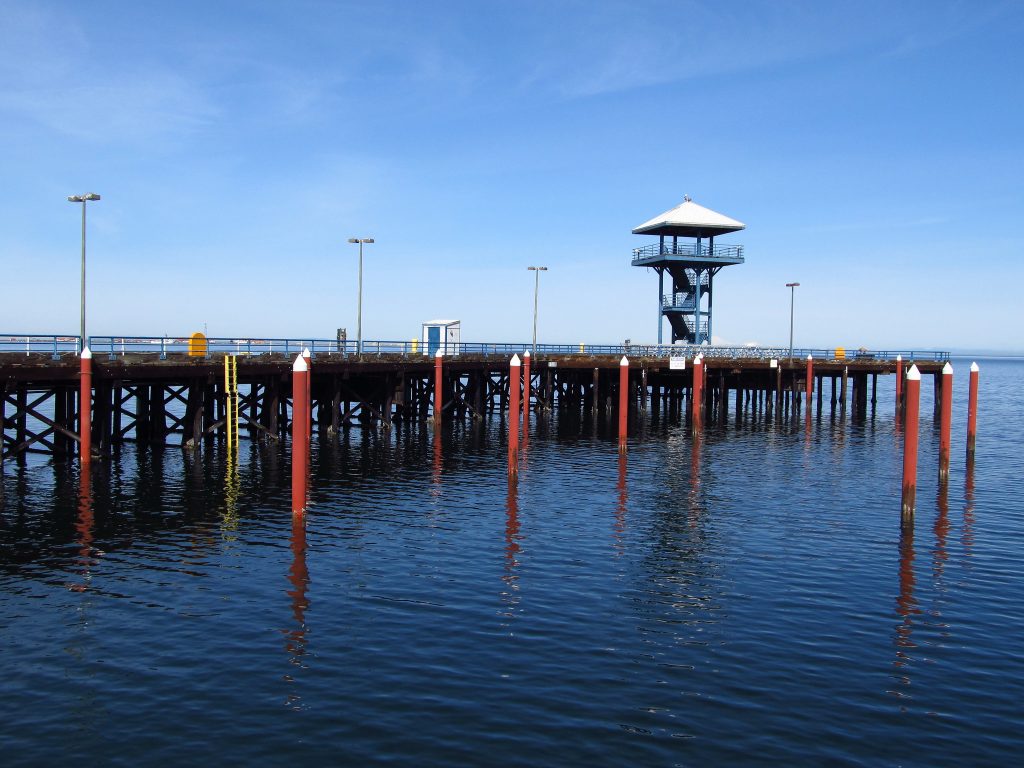15 February 2019–Hourly water level records collected from tide gauges can be used to measure land uplift caused by episodic tremor and slip of slow earthquakes in the Cascadia Subduction Zone, according to a new report in the Bulletin of the Seismological Society of America.
Global Positioning System (GPS) data are typically used to measure uplift from these events, but the new findings offer a way to study the phenomena using tidal gauge records collected in the pre-GPS era, before 1995, the study’s authors said.
The Cascadia Subduction Zone marks where the North American continental plate collides with multiple oceanic plates. The collision can produce devastating megathrust earthquakes that result in massive loss of life and damage to infrastructure, with the last one occurring in the region in 1700. But the zone also hosts slow earthquakes, accompanied by episodic tremor and slip (ETS), that take months or years to release the energy built up by the colliding plates.

The slow earthquakes are of interest to seismologists looking for clues about exactly where and how the plates may be colliding, said Sequoia Alba of the University of Oregon, lead author on the BSSA paper.
In particular, the earthquakes might help researchers understand the boundaries of the “locked zone” at the interface of the plates, where a rupture is likely to occur in the event of a megathrust earthquake.
“The part of the fault that is slipping during ETS can’t be totally locked, because it is experiencing periodic slow earthquakes, so that area sort of defines the edge of what could theoretically slip, producing destructive seismic waves, during a megathrust earthquake,” Alba explained.
“How destructive [a megathrust earthquake] would be to the people and cities of the Pacific Northwest will depend largely on where on the interface the earthquake happens—in this case, how far inland it happens—because the intensity of shaking is dependent on distance,” she added. “If the part of the fault that slips during an earthquake is beneath the ocean floor miles out to sea, for example, that will be less damaging to cities like Portland and Seattle than if the slip patch is directly beneath those cities.”
Other seismologists have suggested that ETC “may change in some observable way over the megathrust cycle that would help us predict how likely an earthquake is in a given period in the future,” Alba noted.
Alba and her colleagues turned to tide gauge data as a possible way to detect ETS patterns before the use of GPS in the Cascadia region. They looked for signs of ETS-related uplift reflected in the hourly water levels measured by four gauges along the Juan de Fuca Strait and Puget Sound, at Port Angeles, Port Townsend, Neah Bay and Seattle. Average relative sea level (compared to a fixed point on land) should appear to descend as the land itself deforms upward during a slow earthquake.
The researchers then calculated the amount of uplift and uplift rates suggested by the gauge records between 1996 and 2011, comparing their results to uplift as measured by GPS over the same time period. The gauge data were not sensitive enough to capture individual ETS events, Alba and colleagues concluded, but they could be used to detect periodic groups of ETS events.
Both the GPS and tide gauge data suggest these events occurred every 14.6 months between 1996 and 2011, but Alba and colleagues could not find that same pattern in the tide gauge data from 1980 to 1995. “Our results are too preliminary to characterize how ETS changes, or if ETS was present during the pre-GPS era, but there does appear to have been a change,” they write.
The recurrence interval for ETS could have been different between 1980 to 1995, they suggest, or slip might have been taking place along a different part of the Cascadia interface during the earlier time period that would not have been captured in the tidal data.
